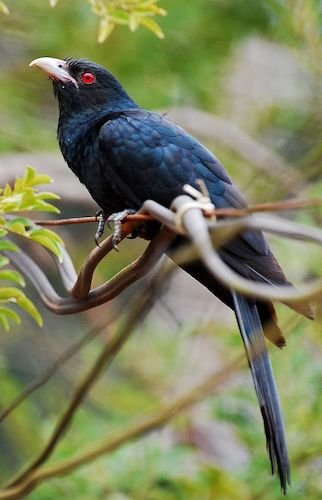Jharkhand

Birding Jharkhand
Jharkhand is a state in eastern India. It was carved out of the southern part of Bihar state on 15 November 2000. Jharkhand shares its border with the states of Bihar to the north, Uttar Pradesh and Chhattisgarh to the west, Orissa to the south, and West Bengal to the east. An area of 28,833 sq mi (74,677 km²).The industrial city of Ranchi is its capital. Some of the other major cities and industrial centers are Jamshedpur, Dhanbad, Bokaro, Sindri, Deoghar, Hazaribagh.The name Jharkhand comes from the Sanskrit Jharikhanda which is the ancient name of the regions dense forest – Jharikhanda. Jharkhand is famed for its mineral wealth and forestry products.
Most of the state lies on the Chota Nagpur Plateau, which is the source of the Koel, Damodar, Brahmani, Kharkai, and Subarnarekha rivers, whose upper watersheds lie within Jharkhand. Much of the state is still covered by forest. Forest preserves support populations of tigers and Asian Elephants.
Jharkhand has a rich variety of flora and fauna. The National Parks and the Zoological Gardens located in the state of Jharkhand present a panorama of this variety.Betla National Park (Palamu), 25 km from Daltonganj covers an area of about 250 square kilometres. The national park has a large variety of wild life like tigers, elephants, bisons locally called gaurs, sambhars, hundreds of wild boar and 15 to 20 feet (6.1 m) long python, herds of spotted deer (cheetals), rabbits and foxes. The mammalian fauna to be seen at Betla National Park also include langurs, rhesus, blue bull and wild boars. The lesser mammals are the porcupine, hare, wild cats, honey badgers, jackals, Malabar giant squirrel, mongoose, wolf, antelope, etc. In 1974, the park was declared Project Tiger Reserve.Part of the reason for the variety and diversity of flora and fauna found in Jharkhand state may be accredited to the Project Tiger Reserve of Palamu, which is abode to hundreds of species of flora and fauna, as indicated within brackets: mammal (39), Snakes (8), Lizards (4), Fish (6), Insects (21), Birds (170), seed bearing Plants and Tress (97) , Shrubs and Herbs (46), Climbers, Parasites and semi-Parasites (25), and Grasses and Bamboo (17).The Hazaribagh Wildlife Sanctuary, with scenic beauties, 135 km from Ranchi, is set in an ecosystem very similar to Betla National Park of Palamu.
-
Wikipedia
GNU Free Documentation License
http://en.wikipedia.org/wiki/Jharkhand
-
Number of bird species: 442
(As at December 2018)State Bird - Asian Koel Eudynamys scolopaceus
-
NP Betla
InformationSatellite ViewInitially comprising 1,026 km2 (396 sq mi) of the Palamu Tiger Reserve, an additional 226 km2 (87 sq mi) was added to the park in 1989 and 63 km2 (24 sq mi) of the Mahuadar wolf sanctuary.[1][2] Betla was one of the first national parks in India to become a tiger reserve under Project Tiger. The park has a variety of diverse eco-systems and abundance of wild animals. Elephants in large numbers are seen mostly between the end of the monsoon season, to the time when watering holes begin to dry in March. Birds include the hornbill, peafowl, red jungle fowl, black partridge, white-necked stork, black ibis, swamp grey, quail, pied hornbill, wagtail, harial, dove, drongo, crested serpent-eagle, forest owlet, papeeha, and other birds usually found in dry deciduous forests. The Kamaldah lake attracts several varieties of water birds including the common whistling, cotton teal, knob-billed duck, snipe and geese. -
WS Dalma
InformationSatellite ViewDalma Wildlife Sanctuary is located 10 km from the city of Jamshedpur and contains significant population of Indian Elephants. The sanctuary covers around 195 km2. Beside elephants there are Indian giant squirrel, sloth bear, barking deer, wild boar, porcupine, mouse deer, pangolin and mongooses in the sanctuary. Commonly seen birds in the sanctuary are the falcons, golden oriole, Indian tree pie, paradise fly catchers, grey hornbills, Indian peafowl, different varieties of king fishers, herons, egrets, mynas, pigeons, racket tailed drongo, magpie robins etc. -
WS Gautam Budha
InformationSatellite ViewLocated in Gaya district of Bihar state and Koderma district of Jharkhand state and covers an area of 259 km2. Prior to becoming a wildlife refuge, the area was a private hunting reserve. Fauna include tigers, leopards, wolves, sloth bears, chitals, chinkaras, and many species of birds. -
WS Hazaribag
InformationSatellite ViewNestling in low hilly terrain, at an average altitude of 615 metres (2,018 ft), it has an area of 184 km2 (71 sq mi) and is home to sambar, nilgai, chital, peafowl, sloth bears, black bears & hyenas.
-
Prabhat Kumar Thakur - Birds of Jharkhand
BLOGPhotoblog
